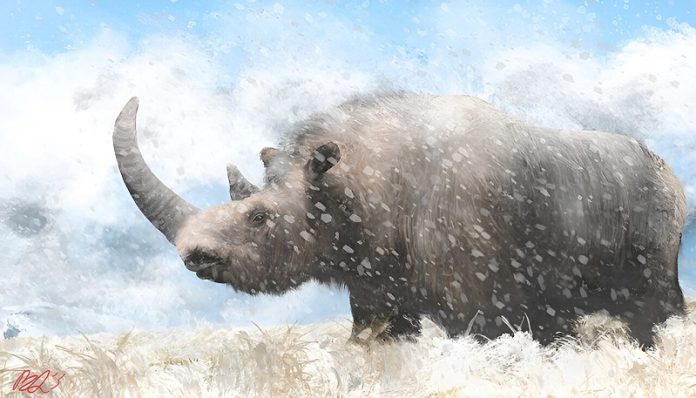
Researchers have discovered that human hunting played a significant role in the extinction of the woolly rhinoceros.
This iconic species, known for its thick skin and long fur, once roamed across northern and central Eurasia before disappearing around 10,000 years ago.
An international team, led by scientists from the University of Adelaide and the University of Copenhagen, used computer modeling to explore this ancient mystery.
By combining computer models, fossils, and ancient DNA, the researchers traced 52,000 years of woolly rhinoceros population history at a level of detail never before achieved.
“From 30,000 years ago, a mix of colder temperatures and steady, low-level hunting by humans caused woolly rhinoceroses to move south into smaller, isolated habitats as the Last Ice Age ended,” explained Associate Professor Damien Fordham from the University of Adelaide’s Environment Institute.
“As the Earth warmed and new habitats became available in northern Eurasia, these animals couldn’t move into these areas. Their populations became unstable and eventually collapsed, leading to their extinction.”
This study, published in the journal PNAS, challenges earlier research that suggested humans had no role in the woolly rhinoceros’s extinction, even though the species lived alongside humans for thousands of years.
Professor Eline Lorenzen from the University of Copenhagen’s Globe Institute highlighted the importance of their findings.
“Our analysis, which used higher resolution data than previous studies, revealed important interactions between woolly rhinoceroses and humans. One key interaction was the consistent, low-level hunting by humans, likely for food.”
The study also draws parallels to modern times. Human activities today, such as overhunting and land use changes, continue to push large animals into fragmented and less favorable habitats. In the late Pleistocene, there were 61 species of large terrestrial herbivores (weighing over one metric ton). Today, only eight of these species remain, five of which are rhinoceroses.
“This research shows how climate change and human activities can lead to the extinction of large animals,” said Professor David Nogues-Bravo from the University of Copenhagen, a co-author of the study.
“Understanding these past extinctions helps us develop strategies to protect today’s endangered species, like the vulnerable rhinos in Africa and Asia. By learning from history, we can better protect the remaining large animals on Earth.”
This discovery not only sheds light on the past but also offers valuable lessons for the future of conservation.
Source: University of Adelaide.



